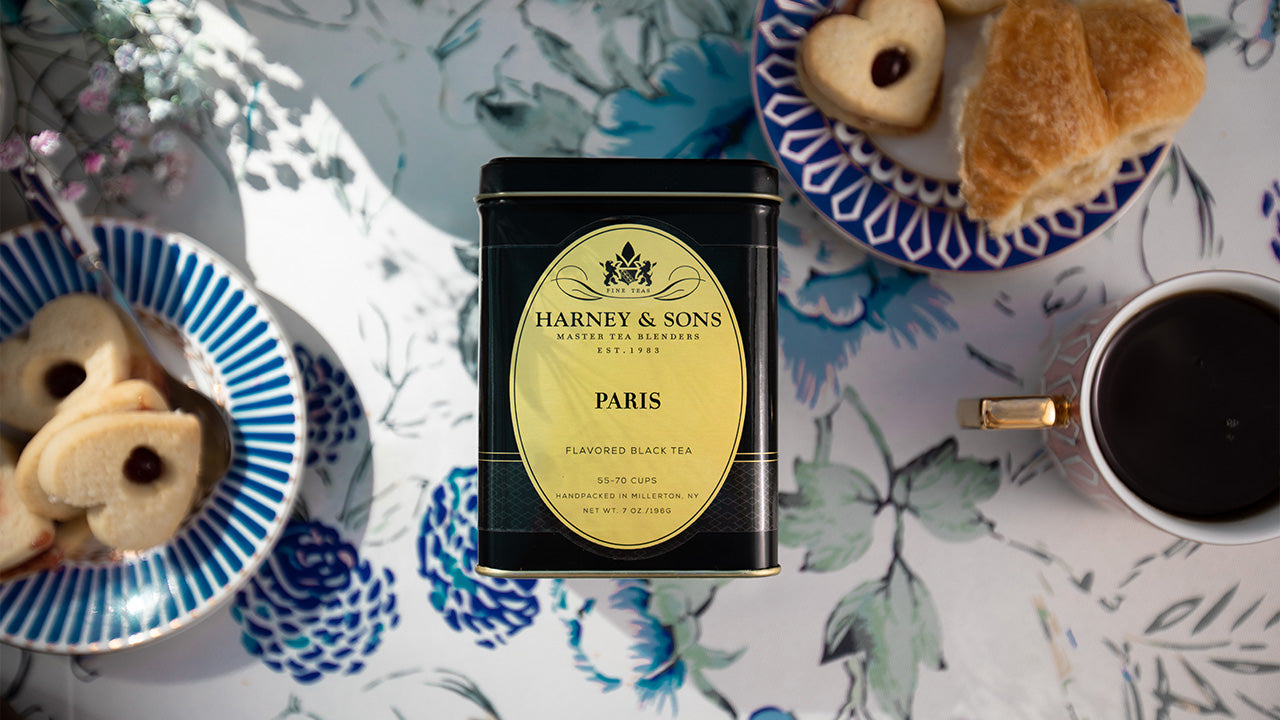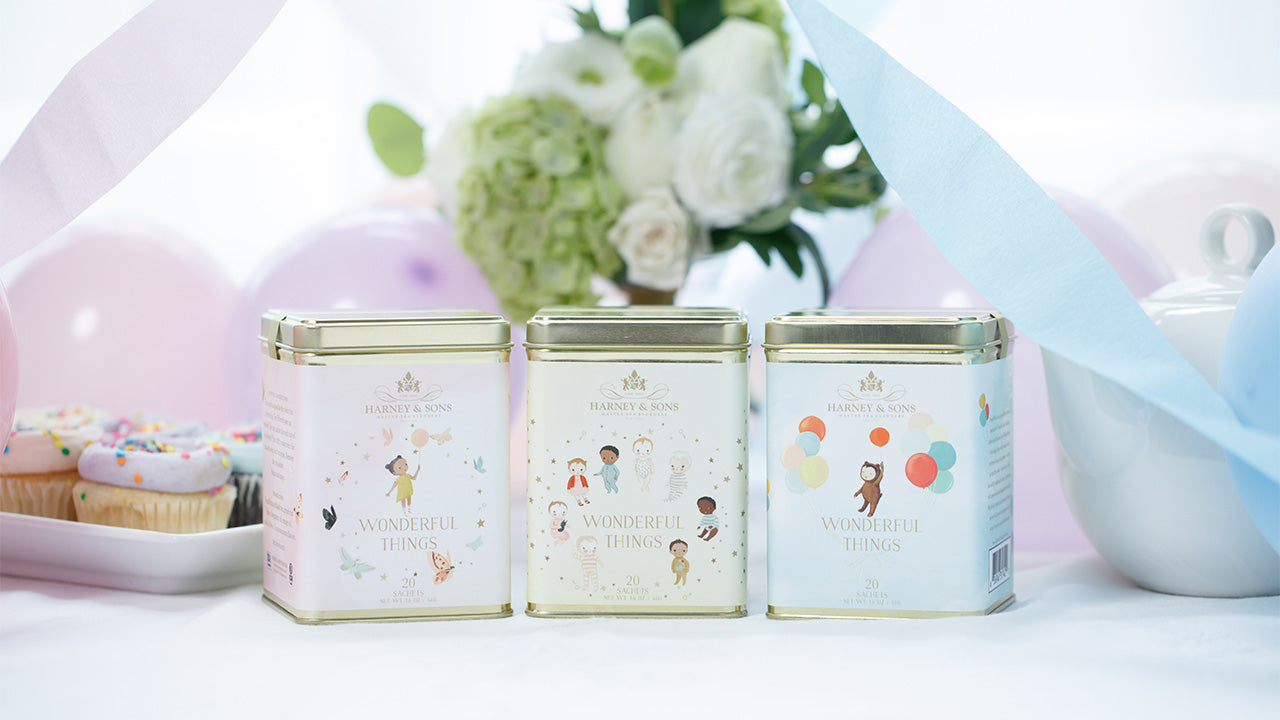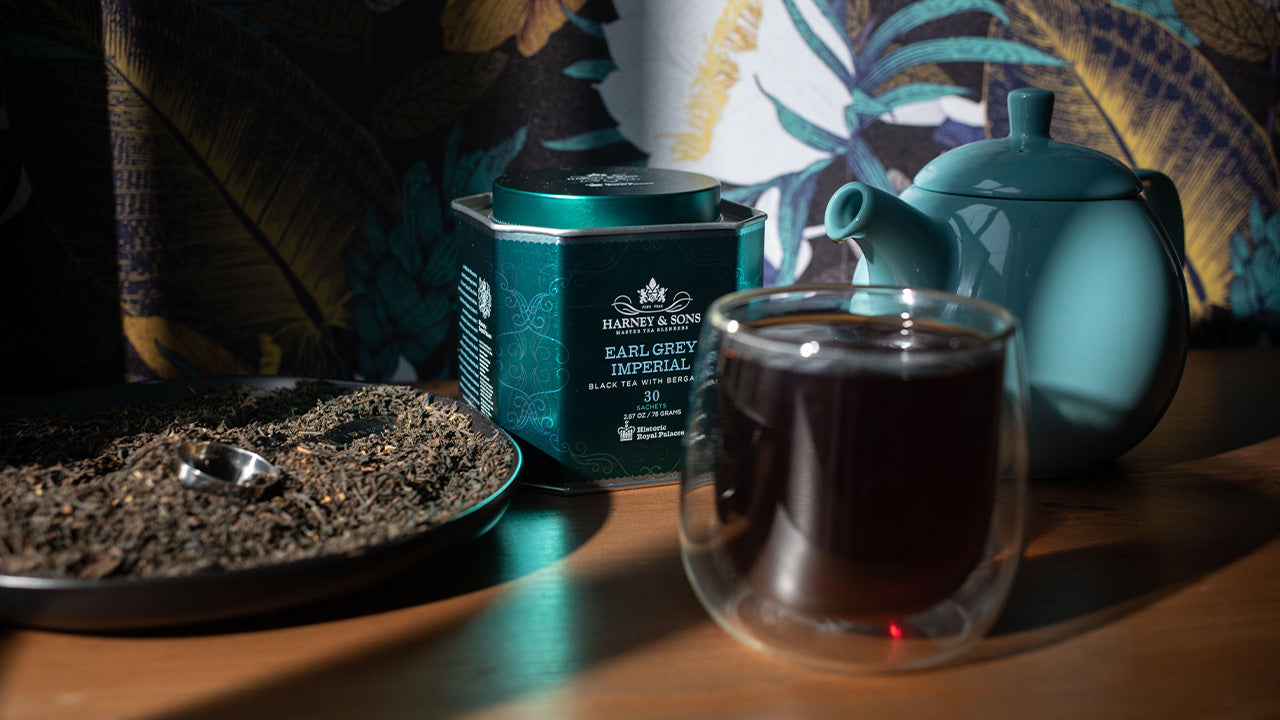Think black tea is just black tea is just black tea is just black tea? You know, that bitter stuff you had back in the day that you bought at the grocery store, and everyone had the same kind at their house too? If you think that, you’re not alone. The good news is that by the time you finish reading this, you’ll have a whole new appreciation of black teas (and there are lots of different kinds of them!). Let’s start with Chinese black teas, shall we?
Chinese teas are made in many, many styles, so one does find many different flavors. Tea made in northern Fujian is always a pleasure to drink. There is a lovely sweetness, and often the cocoa flavors come out. I look for the golden tip indicative of the tea leaf coming from the Big White tea plant.
We offer a Golden Mudan that is made from the tea plants most often used oolong tea that gives a lovely floral and fruity flavor.

From Anhui, one finds the classic Keemun, and there, one does not find as many golden tips. Rather, the leaves are often jet black and smaller. They are finished over charcoal, so have a certain roasted flavor with a bit of floral (rose) notes and some chocolate notes also.
Let us not forget Lapsang Souchong, where the tea leaves are suspended over smoky fires. There the smoky notes are unmistakable. Those same steep mountains produce a newish tea: Jin Jun Mei. This early season tea has developed a cult following in China. People love the mouth-filling creaminess from the abundance of amino acids. The prices of it get bid up for the best tea.
We do get lovely black teas from Zhejiang Province. We look for black teas made from traditional green tea areas, like Anji. These special teas use the wonderful qualities of green tea, but the leaves are oxidized to black. Yum.
My friend Steve from Changsha, Hunan Province would be mad if we forgot his many black tea offerings, such as Sweet Black Gulou or Black King, which have an intense, slightly sweet taste. Steve brought some over a few weeks ago. And they were a hit.

Yunnan makes two styles of black tea. The spicy and sweet teas like Yunnan Golden Tips and the earthy teas of Pu-erh. One could talk about great Chinese black teas for hours.
Assam teas are grown on either side of the Brahmaputra River that flows from high in the Himalayas. The best teas are made in the Second Flush period of May and June. There are two basic styles: orthodox teas, which are made in the traditional manner that simulates a human rolling tea leaves and the leaves turn black over several hours, or CTC (cut, tear, and curl), where the leaves are thoroughly chopped up and quickly turn a light black.
The orthodox teas can be all black or have some golden tips. The base flavor is similar: roasted malt flavors (the grain often used in beer). The more there are golden tips, the sweeter the tea. So I do not see any reason to add milk or sweetener.

The CTC teas come out as dark brown pellets of various sizes. These teas make for a strong tea base that is astringent. It lacks any sweetness. That is why the Brits add milk and sugar to make the astringency palatable and give the tea some sweetness. And the Indians use it as the base for their famous chai, adding milk, sugar, and aromatic spices.

High in the Himalayas, lies the queen of teas: Darjeeling. These gardens cover the steep hillsides with green bushes, and there are snow-capped mountains in the distance. Here, there are two main seasons: First Flush of March and April and the Second Flush of May and June. The flavors are radically different for these two seasons. Also, each garden has a style of its own. And, the weather of these periods influences the flavor immensely.
First Flush is made in a fashion that pleases the main consumers: the Japanese. So the tea barely oxidizes and looks like green tea. This makes for an astringent tea with lovely tropical flavors like pineapple and grapefruit. No milk - please.
And, Second Flush is made in the traditional Darjeeling style, with the tea leaves oxidized to a dark brown. The tea has lovely toast flavors accented by some stone fruit (apricot) notes. If you are lucky, you might get a Muscatel Darjeeling – and that is special. The tea grower allows the plants to get infected by a particular insect, and the plant reacts to this attack by making a chemical to repel those pests. The good news is that the chemical has a lovely flavor for us humans that reminds us of ripe muscat grapes. Let’s hope you are lucky!

I get asked a lot about brewing and storing tea. When it comes to black teas, most of them would be brewed the same (except not First Flush Darjeeling). Boil fresh water, warm the pot by a quick rinse of the hot water, and put a teaspoon of tea per desired cup (two cups needs two teaspoons). Pour boiling water over the tea, steep for 4-5 minutes. Strain off the leaves and enjoy a nice cup of black tea! To keep tea from becoming bitter, remove the leaves after the 5 minutes is up. That way it will not over steep. How do you know if you did it right? If the tea tastes great, then you probably brewed it correctly!
A word about water: the Chinese say that water is the mother of tea. You need water that is not tainted by chlorine or sulfur or something else, which means you need to filter the water. Tea does need the dissolved minerals to make tea taste good. So treating your water and removing the trace minerals is a mistake. Same with buying filtered water. Filtered tap water is a good idea.
I also get asked if there’s a difference in flavor in a tea if it’s loose leaf, sachet or teabags. The answer is if you have the same type of tea, like let’s say Earl Grey, the different forms will taste similar to one another, but the best product would be the loose tea. The full range of flavors are found in that type of tea.
There is a bit of an art to getting the most flavor out of your tea. First, being mindful is a good way to appreciate the complex flavors found in great teas. Remember that you can smell much more than you can taste. So when we taste many teas to decide which one to purchase, we try to make that liquid tea into a gas that we can smell. Like with wine tasting, we slurp the tea a bit aerate it and get the aromas up the passage in the back of one's mouth so that it makes it to the smell receptors. At home, adding a bit of air when drinking would be a good idea. However, your friends might find your slurping to be a bit obnoxious, so try just a bit of breathing while appreciating your tea.

Finally, when it comes to storing your teas, our father and company founder, John Harney, used to say that “tea is a blotter.” It will absorb off-flavors from coffee, spices, leftover tuna fish salad, whatever. Moisture and light also cause problems. So, store tea in a dark container.
Just remember, whatever you do, make sure you drink teas that make you smile, which would most definitely not be ones with notes of tuna fish. Enjoy exploring the world of black teas – hopefully you’ll find new ones you haven’t tried before and expand your tea world even further.





6 comments
Mary
Thank you very much for reposting this very informative black tea blog! I missed it the first time. I’ve been ready to move on from my usual teas and try some specific regional black teas, but needed guidance. How fascinating to read about the various regions and production styles. I’m ready to branch out and expand my palate with your delicious, satisfying selections!
Thank you very much for reposting this very informative black tea blog! I missed it the first time. I’ve been ready to move on from my usual teas and try some specific regional black teas, but needed guidance. How fascinating to read about the various regions and production styles. I’m ready to branch out and expand my palate with your delicious, satisfying selections!
Carol Franks-Randall
Mike,
Congratulations on providing your tea lovers with a lot of great information about black teas in a clear, concise manner. I enjoyed reading your post and learned quite a bit. Keep up the great work!
Mike,
Congratulations on providing your tea lovers with a lot of great information about black teas in a clear, concise manner. I enjoyed reading your post and learned quite a bit. Keep up the great work!
Louise
Thank you so much for your blog ☺️. I read it more than once to get all the info. I love tea and usually get yours in a store but your website is so beautiful and informative.
Your teas are wonderful 🥰
Louise
Thank you so much for your blog ☺️. I read it more than once to get all the info. I love tea and usually get yours in a store but your website is so beautiful and informative.
Your teas are wonderful 🥰
Louise
Paul Abbott
Great article, especially on Chinese teas, which I’ve barely tried.
Thanks Mike
Great article, especially on Chinese teas, which I’ve barely tried.
Thanks Mike
Emilio Lopez
Great Job Señor Mike !
Great writing and informative.
I did not read any thing about fermented teas like Pu-Erh Tea .
Thank you for your beautiful information.
Emilio Lopez
Great Job Señor Mike !
Great writing and informative.
I did not read any thing about fermented teas like Pu-Erh Tea .
Thank you for your beautiful information.
Emilio Lopez
Sherrie
Informative! The content and the pictures are a joy.
Informative! The content and the pictures are a joy.